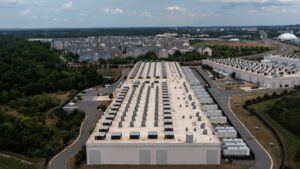The great coal debate of 2020: Is the industry going the way of the dodo?

Pic: Schroptschop / E+ via Getty Images
It is the debate that has found itself taking centre stage once again — should Australia build more coal-fired power plants?
Proponents have argued that building new plants across the country will keep jobs in regional Australia and keep power prices down. After all, if China is also building new coal power plants, then Australia isn’t the only country still investing in coal.
However, the Institute for Energy Economics and Financial Analysis (IEEFA) says that using China as the benchmark for new coal investments ignores the fact that its current coal generation of 1,100 gigawatts is running at less than half capacity on average.
IEEFA director of energy finance studies Tim Buckley noted the construction boom from building new coal-fired plants is aimed at driving much needed growth as a short-term economic stimulus.
“That many of the newly built power stations are left unused, or running at less than 50 per cent capacity, is a good indication that this isn’t about a thirst for coal,” he explained.
“The Chinese government needs to provide lots of energy for its population, but the economic stimulus that flows from building all those new power plants doesn’t hurt either.”
Buckley added that China was also accelerating its construction of renewable energy generation and could abandon more of its coal assets as renewables became cheaper.
“I do not believe it is in Australia’s interest to keep investing in a product that is now technologically and economically challenged,” he said.
“We’ve seen the price of thermal coal drop 40 per cent in the last two years, so everything is far from rosy and positive from the thermal coal industry’s perspective in Australia.”
So what does it mean for Australian coal and the players in it?
The Reserve Bank of Australia noted in September 2019 that the changing outlook for coal prices had been weighing on producers’ investment decisions to expand capacity.
Additionally, it has become harder to secure funds as banks become increasingly reluctant to finance coal developments.
A notable example of this reluctance is Goldman Sachs, the world’s largest Investment bank, ruling out any future investments for thermal coal mines or power stations globally.
While this brings into question the future of Australian coal, there may be a surprising lifeline for the industry.
Australian chief scientist Dr Alan Finkel is a proponent of using coal and natural gas to produce hydrogen as a shortcut towards establishing a hydrocarbon industry in the country.
While using fossil fuels to produce hydrogen will still produce carbon dioxide in the process, it is a lot easier to capture these emissions from the hydrogen gas stream efficiently compared to trying to do so at the end user.
“I know some may be sceptical, because carbon capture and permanent storage has not been commercially viable in the electricity generation industry,” Finkel said in a speech to the National Press Club.
“But the process for hydrogen production is significantly more cost-effective for two crucial reasons.
“First, since carbon dioxide is left behind as a residual part of the hydrogen production process, there is no additional step, and little added cost, for its extraction. And second, because the process operates at much higher pressure, the extraction of the carbon dioxide is more energy efficient and it is easier to store.”
NOW READ:
Coking coal, thermal coal are polar opposites in 2020
Climate change is a multi-billion-dollar opportunity
Related Topics
UNLOCK INSIGHTS
Discover the untold stories of emerging ASX stocks.
Daily news and expert analysis, it's free to subscribe.
By proceeding, you confirm you understand that we handle personal information in accordance with our Privacy Policy.








